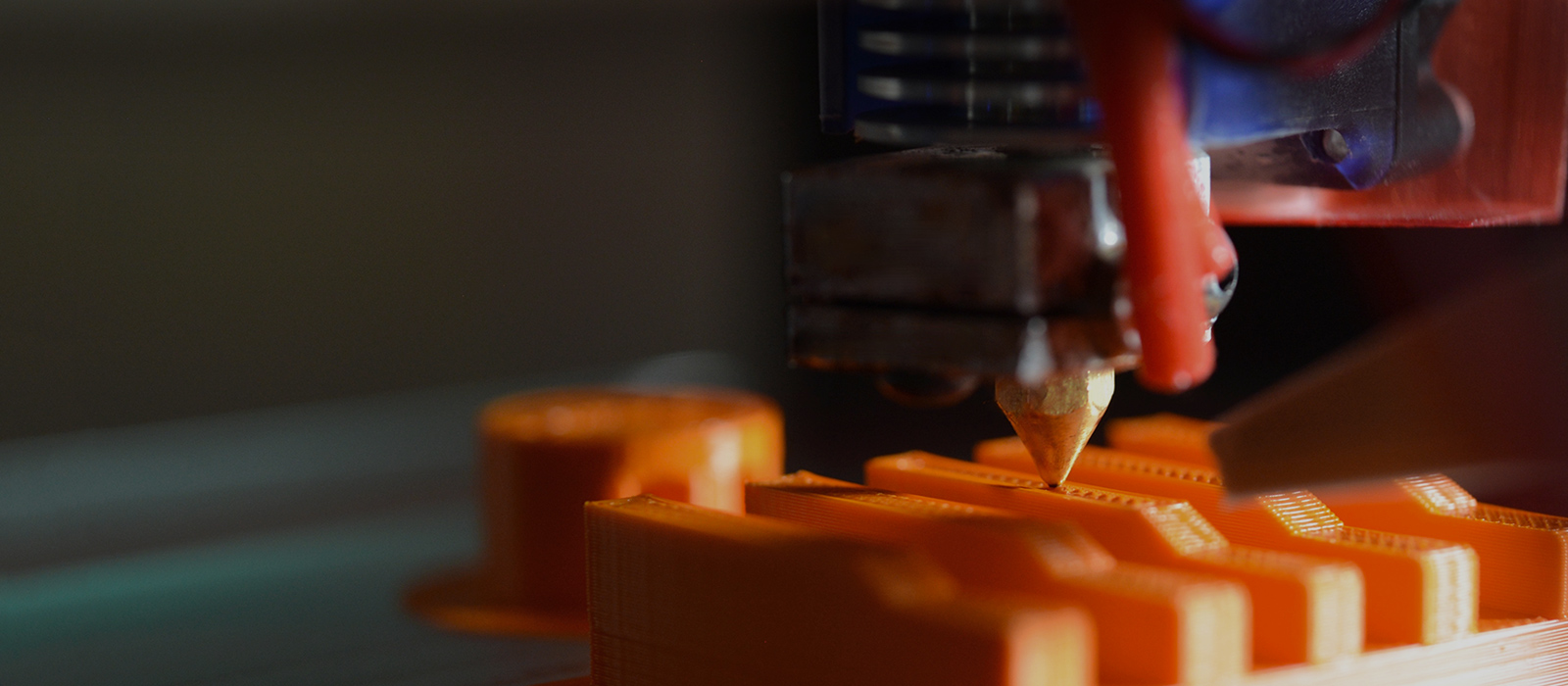Additive manufacturing technology (mainly 3D printing technology) has become a hot topic in the field of technology in recent years. We provide 3D printing equipment, materials, and services for various materials such as metals, plastics, carbon fibers, ceramics, biomaterials, resins, etc. We also undertake development projects for 3D printing processes and materials; At the same time, we also introduce various advanced manufacturing processes or technologies for industrial, scientific research, or laboratory purposes.
SLM Solutions- The Makers of Industrial Metal AM Machines
SLM focuses on the development and distribution of the most innovative, production-oriented metal additive manufacturing systems.
3D Lab- Ultrasonic Metal Powder Atomizers
ATO Technology uses ultrasonic vibrations to break a molten metal into small droplets that quickly solidify into metal powder under an inert gas protective atmosphere.
Henniker - Plasma Treatment Systems
Henniker Plasma is a leading manufacturer of plasma treatment systems for cleaning, surface activation to improve adhesion, and functional nano-scale coating.
Our innovative plasma treatment equipment is trusted globally in both critical industrial manufacturing settings and by leading academic research groups where it is used in biomedical research, life sciences, energy storage, filtration and many other areas of materials science in general.
Your Metal 3D Printing Partner
Nikon SLM Solutions AG is a global provider of integrated metal additive manufacturing solutions, headquartered in Lübeck, Germany. As an inventor of the selective laser melting process, our company focuses on the development and distribution of the most innovative, production-oriented metal additive manufacturing systems. Our focus is to be a leader in product performance and innovation and for you, as our customer, to benefit from that approach.
As part of our commitment, the SLM® team utilizes our engineering facilities around the world to foster collaboration on metal AM projects and help scale our users to series production. Nikon SLM Solutions provides consultation, installation, maintenance, training and other learning opportunities for customers to harness the capabilities and exercise best practices with selective laser melting.
The Makers Of Industrial Metal AM Machines
SLM®125
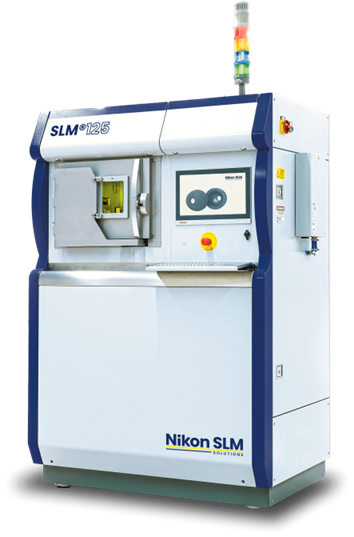
Compact, accurate high power printing for low powder volume applications. The smallest machine in the SLM Solutions’ lineup, the SLM®125 is ideal for a variety of users, from rapid prototyping and low volume manufacturing to serial production and research work.
- ● 125 x 125 x 125 mm build envelope
- ● Single laser
- ● Multi-material
Real World Parts:
- ● Material: Tool Steel 1.2709
- ● Build Time: 2h 21m per Unit

SLM®280 2.0
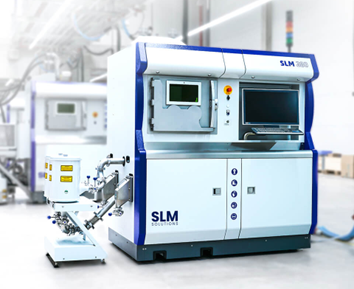
Metal 3D printing with multiple lasers and closed-loop powder handling. The SLM®280 2.0 is ideal for medium to high volume metal additive manufacturing part production and prototypes.
- ● 280 x 280 x 365 mm build envelope
- ● Multi-laser (twin)
- ● Multi-material
Real World Parts:
- ● Material: IN718
- ● Layer Thickness: 30µm
- ● Build Time: 3d 5h 25m (Maximized Build Chamber, 1 Unit)

SLM®280 生产系列
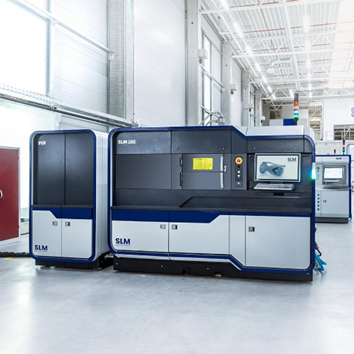
Third-generation machine designed for production environments. Featuring multiple lasers, closed-loop powder handling and upgraded process control ideal for demanding applications requiring high productivity.
- ● 280 x 280 x 365 mm build envelope
- ● Multi-laser (twin)
- ● Dedicated material
- ● Automated powder handling
- ● Permanent filter
Real World Parts:
- ● Machine: SLM®280 Twin
- ● Material: Ti6Al4V
- ● Layer Thickness: 30µm
- ● Build Time: 1d 19h 11m (Maximized Build Chamber, 2 Units)
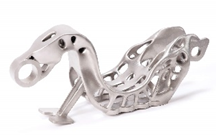
SLM®500
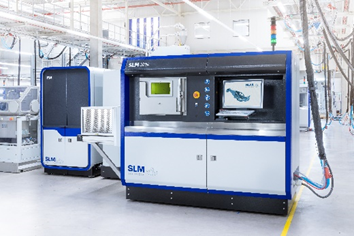
The first quad-laser metal system on the market, SLM®500 can integrate lasers independently or in parallel to increase build rates by 90% over twin laser configurations.
- ● 500 x 280 x 365 mm build envelope
- ● Multi-laser (twin or quad)
- ● Dedicated material
- ● Automated powder handling
- ● Turnkey system includes part removal station
Real World Parts:
- ● Machine: SLM®500 Quad
- ● Material: AlSi10Mg
- ● Layer Thickness: 60 µm
- ● Build Time: 2d 7h 23m (Maximized Build Chamber, 1 Unit)
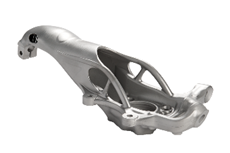
SLM®800

The SLM®800 features an extended z-axis for large-scale part production. The ability to have multiple machines connected via the SLM® HUB opens new possibilities for large-scale industrial metal additive manufacturing.
- ● 500 x 280 x 850 mm build envelope
- ● Multi-laser (quad)
- ● Permanent filter
- ● Multi-machine set-up
- ● SLM®HUB automated cylinder handling and powder management
Real World Parts:
- ● Machine: SLM®800
- ● Material: Titanium
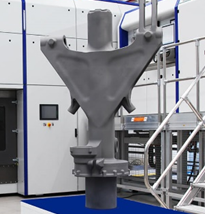
NXG Xll 600 / NXG Xll 600E
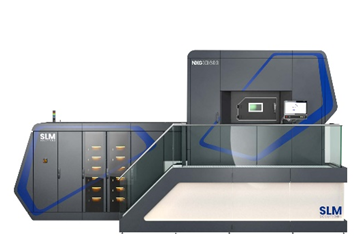
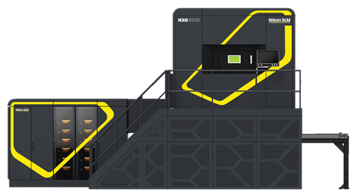
The NXG Xll 600 is a revolution in industrial manufacturing. The NXG XII 600 was designed for high-volume, serial productions. The arrival of this machine with 12 lasers with 1000 Watts will change supply chains and the common inventory models forever. The integration of this machine in traditional production lines is not just a breakthrough for additive manufacturing, but the start of a new era in manufacturing and metal additive printing. It is built on four core principles: Productivity, size, reliability and safety.
- ● Double Jump Speed enables build rates of 1000ccm/h
- ● An unrivaled output of 10.000kg of produced parts per year
- ● The NXG XII 600E features an extended z-axis of 1500mm, allowing you to go further, than ever before
Real World Parts:
- ● Size 590 X 560 X 367 Mm
- ● Weight 15.5 Kg
- ● Material AlSi10mg
- ● Production Time 21 Hours
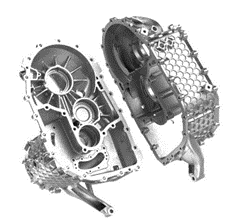
About 3D Lab-ATO
3D Lab was established in 2007, and its expertise in additive manufacturing technologies, particularly 3D printing and the creation of new materials, dates back more than 15 years. We partnered with well-known 3D printer manufacturers such as 3D Systems, Coherent, and 2OneLab, and invested in R&D to overcome obstacles to AM technology development. We came up with a solution to guarantee the freedom of atomization of new alloys.
ATO technology was created by passionate engineers to develop new solutions in metal powdering. At Form Next 2017, we introduced the ATO One, our first ultrasonic atomizer prototype.
ATO atomizers are a revolutionary method for creating highly spherical metallic powders. Our patented technology is designed for universities, research departments, and service bureaus, but is now also used by industrial users for its stability and repeatability achieved. It is a game changer for a variety of business sectors, including manufacturing, healthcare, science, and education. It gives you the opportunity to benefit from this technology with very affordable pricing and a wide range of products.
Much of our team is made up of qualified engineers who have access to a daily laboratory for R&D, a completely operational production line, and other resources. We use innovative solutions for agile and flexible manufacturing.
By developing turnkey solutions, we are gradually extending the portfolio of our branded solutions. Our products, which include atomizers, sieving systems and cleaning stations, are based on reliable ultrasonic technology. We are honored that famous and renowned customers use our products.
We value our customers and their feedback and provide the highest level of after-sales service through close contact with the market and extensive experience gained from hundreds of successful installations.
About ATO Technology
ATO Technology uses ultrasonic vibrations to break a molten metal into small droplets that quickly solidify into metal powder under an inert gas protective atmosphere. The size of the metal powder produced is affected by the ultrasonic frequency used, with higher frequencies producing smaller particles and lower frequencies producing larger particles. Other factors that affect particle size and distribution include viscosity, density, ultrasonic amplitude and atomizer design.
The process of ultrasonic atomization of metal powder using the atomizer with ATO technology involves feeding raw material into the pressurized atomization chamber where an electric arc is created to melt the material. Ultrasonic vibrations are transmitted through a sonotrode to the molten metal bath, forming capillary waves that eject metal droplets with a diameter that depends on the ultrasonic frequency, surface tension, and density of the liquid metal. The droplets are ejected into a cooled stream of argon gas and rounded into near-perfect spheres by surface tension. The droplets then cool and solidify before being sorted and collected.
Our Ultrasonic Metal Powder Atomizers
ATO Lab Plus
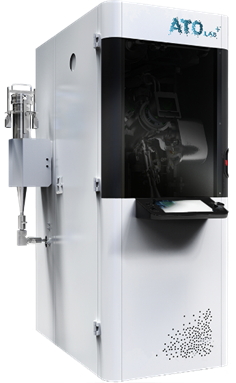
- ● REACTIVE & NON-REACTIVE METALS
- ● LOW WASTE
- ● OPEN ATOMIZATION PARAMETERS
ATO Lab Plus is an innovative device designed to produce high-quality metal powders for additive manufacturing applications. This atomizer is capable of producing a wide range of both reactive and non-reactive metal powders, including aluminum, copper, stainless steel, titanium, and other alloys. This makes it an incredibly versatile tool that can be used in a variety of applications across multiple industries.
In terms of usability, the ATO Lab Plus features an intuitive control system with a user-friendly interface, along with the precise control over parameters. Operators can easily adjust parameters to achieve optimal powder properties for their specific needs. This ease of use makes the ATO Lab Plus an ideal tool for research and development as well as industrial-scale production. The system is also equipped with a number of safety features, including a cooling water monitoring system, automatic gas shut-off valves, and emergency stop buttons
ATO Noble

- ● PRECIOUS METALS
- ● MAXIMUM MATERIAL RECOVERY
- ● PARAMETERS DEDICATED
- ● UNDER PRECIOUS METALS
ATO Noble is an ultrasonic metal powder atomizer with the same basic features as ATO Lab Plus, but modified to work with precious metals and produce high quality precious metal powders. It responds to customer needs for economical atomization of expensive and rare metal alloys. Since there are no limitations on the minimum load and the system is easy to change to another material, the cost effectiveness and freedom of the atomization process are assured.
The ATO Noble is specifically designed to produce precious metals such as gold, silver, platinum, etc. with high productivity and efficiency. ATO Noble uses Zero Loss Technology which reduces material waste to an absolute minimum. We have achieved this by creating a specially adapted filtration system and a closed loop of gas circulation. Innovative system allows recovery of valuable materials for reuse with a single click of a button.
Technologies & Applications
There are many technologies that use metal powders as a key component, including powder metallurgy, additive manufacturing (AM), thermal spray coatings, and chemical vapor deposition.
The specific requirements for the metal powders used in these technologies can vary, depending on the application and the properties required of the powder.
Laser Powder Bed Fusion :LPBF / SLM
Standard Particle Size Distribution:10~60 μm
Laser Powder Bed Fusion (LPBF), also known as Selective Laser Melting (SLM), is a metal 3D printing technology that uses a high-powered laser to selectively melt and fuse metal powder particles together to create a solid part.
In LPBF/SLM, a layer of metal powder is deposited onto a build platform. The high-power laser is then used to selectively melt and fuse the powder particles together, layer by layer, until the part is complete. The process is performed in a controlled atmosphere to prevent oxidation and ensure high-quality part production.
Direct Energy Deposition:DED
Standard Particle Size Distribution:45~90 μm
Direct Energy Deposition (DED) is a 3D printing technology that uses a high energy source, such as a laser or electron beam, to melt and deposit metal powders or wires onto a substrate. This technology is capable of producing metal parts with high strength, high density and complex geometries.
In DED, the metal powder or wire is fed through a nozzle and directed onto a substrate. The high-energy source then melts the metal, which solidifies and fuses with the substrate to form a solid part. The process is repeated layer by layer until the desired part is complete.
Brazing & Soldering
Standard Particle Size Distribution:5~50 μm
Brazing and soldering are two metal joining processes that use metal powders to create strong and reliable bonds between two or more metal parts. Both processes involve the use of a filler material, typically a metal alloy in powder form, which is heated to melt and flow between the parts being joined.
Powder spraying
Standard Particle Size Distribution:5~50 μm
Powder spraying, also known as thermal spray coating, is a metal powder technology in which a stream of molten or semi-molten metal particles is sprayed onto a surface to form a coating.
In powder spraying, metal powder is fed into a spray gun, where it is melted or heated to a semi-molten state. The spray gun then projects the molten or semi-molten metal particles onto the surface to be coated, where they solidify to form a coating. The process is typically performed in a controlled environment to ensure high-quality coating production.
Filters and foams
Standard Particle Size Distribution:10~50 μm
Metal powder technology is not limited to creating solid parts and coatings. It can also be used to create porous filters and foams that have unique properties and applications.
To create metal filters and foams, metal powder is mixed with a binder to create a paste or slurry. The mixture is then formed into the desired shape using mold or 3D printing technology. The molded part is then heated to burn off the binder and sinter the metal particles together, creating a solid, porous structure.
Conventional Powder Metallurgy
Standard Particle Size Distribution:1~120 μm
Conventional Powder Metallurgy (PM) is a manufacturing process in which metal powders are compacted into the desired shape and then sintered to produce a solid metal part. Particle size distribution requirements for metal powders used in PM can vary depending on the specific materials and equipment used.
The particle size distribution requirements for PM powders depend on several factors, including the desired properties of the final part, the sintering conditions, and the method of powder compaction. In general, finer particle sizes result in parts with higher density and better surface finish. However, finer powders can be more difficult to handle and can result in increased tool wear during compaction.
Laser cladding
Standard Particle Size Distribution:45~120 μm
Laser cladding, also known as laser metal deposition, is a metal powder technology that uses a high-powered laser to melt and fuse metal powder onto a surface to create a coating or repair a damaged part.
In laser cladding, metal powder is fed into a stream of inert gas and directed through a nozzle onto the surface to be coated or repaired. A high-powered laser is then used to melt and fuse the metal particles to the surface, creating a strong and durable coating. The process is controlled by computer software to ensure precise and accurate application of the coating.
Binder jetting
Standard Particle Size Distribution:5~25 μm
Binder Jetting is a 3D printing technology that uses a binder to selectively bond layers of powder material to create a part. The process is repeated layer by layer until the part is complete.
In Binder Jetting, a thin layer of powder material is spread on a build platform. The print head then selectively applies a binder to the powder layer according to the desired shape of the part. Once a layer is completed, the platform is lowered, and the process is repeated with a new layer of powder until the part is complete.
Metal Injection Molding:MIM
Standard Particle Size Distribution:1~30 μm
Metal Injection Molding (MIM) is widely used to produce medical devices, aerospace and defense components, automotive parts, consumer products and electronics. It is a versatile and cost-effective manufacturing process that can produce small, complex metal parts with high precision and consistency.
In the Metal Injection Molding (MIM) process, metal powder is mixed with a binder to create a homogeneous feedstock. The feedstock is then molded into the desired shape using an injection molding machine. After molding, the part undergoes a rebinding process to remove the binder material and is then sintered to create a fully dense metal part. MIM is a versatile and cost-effective manufacturing process that can produce complex metal parts with high precision and consistency
Other:HIP, PPS, SPS
Standard Particle Size Distribution:1~50 μm
Hot Isostatic Pressing (HIP), Powder Plasticization Sintering (PPS), and Spark Plasma Sintering (SPS) are three metal powder technologies that use heat and pressure to consolidate metal powders into solid parts. These techniques are particularly useful for producing parts with high density, strength, and dimensional accuracy.
In addition to the metal powder technologies featured on the above, there are many other innovative methods that use metal powders to produce high-quality parts and components. These technologies include a range of advanced additive manufacturing techniques as well as more traditional manufacturing methods that incorporate metal powders to improve performance and efficiency. Some examples of these technologies include metal foam production and melt spinning, among others. By using metal powders as a key material in these various manufacturing processes, engineers and manufacturers can achieve exceptional precision, strength and reliability in their products, helping to push the boundaries of what is possible in modern manufacturing.

Henniker Product Range:
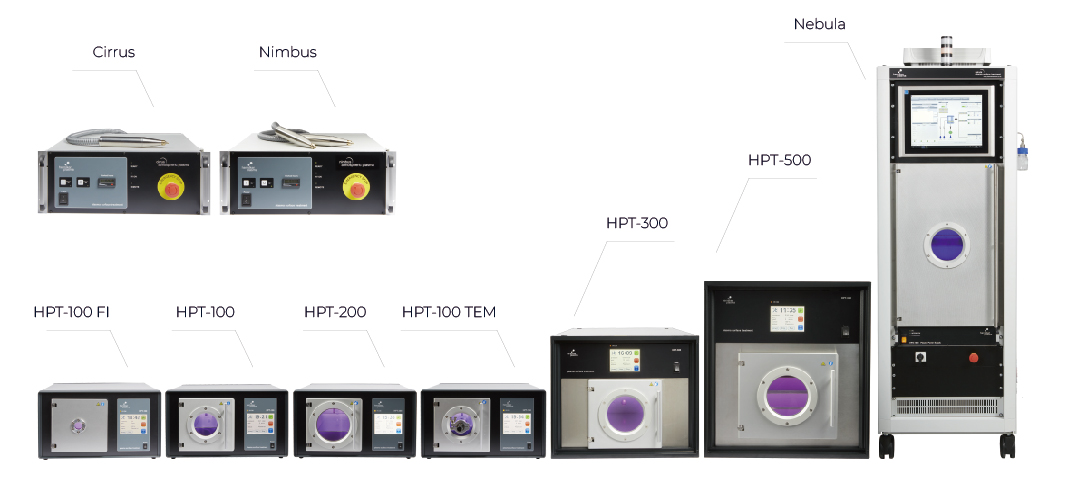
1. HPT-100 & HPT-200
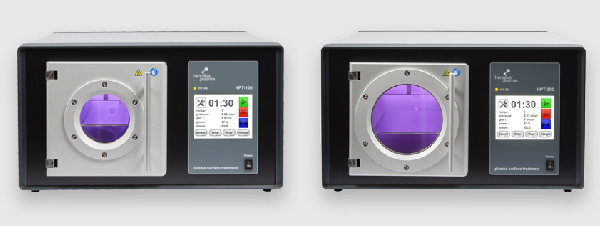
The HPT-100 & HPT-200 are microprocessor controlled benchtop plasma treatment systems that are ideally suited to surface activation, cleaning and modification of a wide range of materials including polymers, metals, glass and ceramics.
Available in fixed, single, or dual gas inlet versions and with onboard gas mixing manifold, the HPT-100/200 systems are able to handle a wide range of gases for optimised treatments, including air, oxygen, hydrogen, argon, nitrogen and many others.
An optional vapour delivery inlet extends the use to liquid precursors and a corrosion-resistant version expands the choice even further to address specific material treatments including;
- ● Plasma cleaning
- ● Plasma surface activation to improve adhesion
- ● Functional plasma coatings
- ● Plasma etching
- ● PDMS & microfluidic devices
- ● PEEK & other engineering polymers
- ● PTFE
- ● Metals
- ● Ceramics
- ● Glass & optical devices
2. HPT-300 & HPT-500
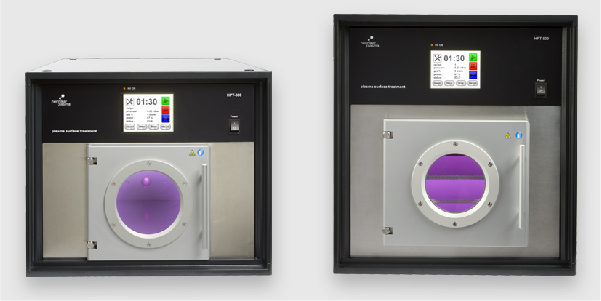
The HPT-300 & HPT-500 are microprocessor controlled benchtop plasma treatment systems which are ideally suited to surface activation, cleaning and modification of a wide range of materials including polymers, metals, glass and ceramics.
Available in single or dual gas inlet versions and with onboard gas mixing manifold, the HPT-300/500 systems are able to handle a wide range of gases for optimised treatments, including air, oxygen, hydrogen, argon, nitrogen and many others.
An optional vapour delivery inlet extends the use to liquid precursors and a corrosion-resistant version expands the choice even further to address specific material treatments including;
- ● Plasma cleaning
- ● Plasma surface activation to improve adhesion
- ● Functional plasma coatings
- ● Plasma etching
- ● PDMS & microfluidic devices
- ● PEEK & other engineering polymers
- ● PTFE
- ● Metals
- ● Ceramics
- ● Glass & optical devices
3. Nebula
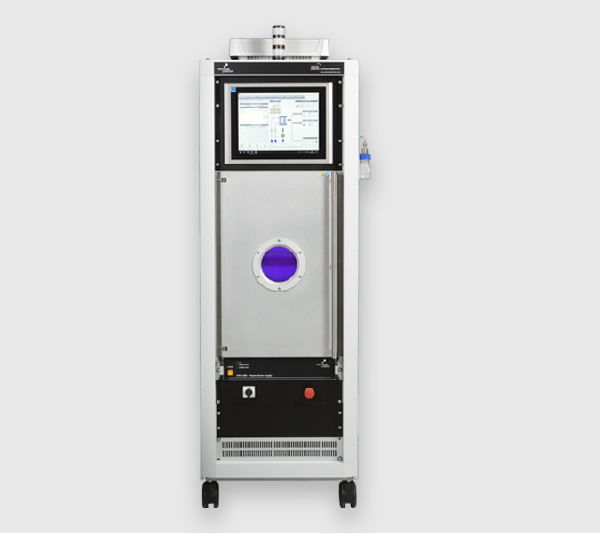
NEBULA plasma surface treatment systems feature large-format vacuum chambers along with many advanced features, all with the reliability of recipe-driven PLC control.
They are configurable tools that are both robust enough for reliable, repeatable industrial processing and at the same time flexible enough for the research into, and development of, leading-edge plasma processes.
The NEBULA range has been designed around our core technologies in plasma surface treatment and plasma process development. With chamber volumes ranging from 50L to 150L, each instrument may be configured with multiple parts tray/electrodes for either horizontal or vertical mounting arrangements. Additionally, a high capacity rotary drum mechanism can be chosen for the treatment of large numbers of small parts for example.
NEBULA plasma systems are used for cleaning, adhesion improvement and enhanced wetting of surfaces via plasma surface activation. Treatments can be performed equally on metals, polymers, composites, glass and ceramics.
A unique feature of each NEBULA system is the addition of an optional monomer dosing inlet. This is a fully automated device for the introduction of a wide range of liquid monomers to produce permanently functionalised surfaces via plasma polymerisation, greatly extending the range of plasma surface treatment possibilities in a single machine.
Features:
- ● 30L – 150L chamber volumes
- ● Horizontal, vertical and rotary drum parts tray options
- ● Plasma polymerisation inlet
- ● PLC control
- ● Fully automated, recipe-driven processes
4. Cirrus
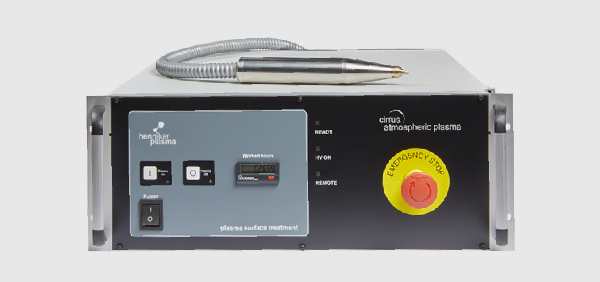
The Cirrus is a single nozzle atmospheric plasma treatment system ideally suited to surface activation, cleaning and modification of a wide range of materials including polymers, metals, glass and ceramics.
The Cirrus is extremely simple to operate via the front panel soft-keypad and can also be interfaced with external control equipment using the rear panel Sub-D connector providing a variety of I/O control inputs and status read-back to ensure seamless operation with production lines or robot cells.
The Cirrus operates from a standard single-phase electrical outlet and require only compressed air for operation.
The compact controller features an interlocked airflow regulation unit as standard so that no ancillary equipment is required.
Atmospheric Plasma Advantages
Atmospheric plasma systems address a range of specific treatments & material treatments including; plasma cleaning, plasma surface activation to improve adhesion, PEEK & other engineering polymers, PCBs, metals, ceramics and glass.
- ● Compact benchtop or rack-mount unit
- ● User-friendly soft-key interface
- ● I/O subsystem for line integration
- ● Integrated gas monitoring & control
- ● Precise & repeatable
- ● Treatment of polymers, glass, ceramics, metals Fast, localised atmospheric plasma pre-treatment of parts prior to bonding
- ● Ultra-fine atmospheric plasma cleaning
- ● Surface activation with atmospheric plasma
- ● Highest quality treatments
- ● Localised treatments
- ● Very low operation cost & easy integration with automated lines
5. Nimbus
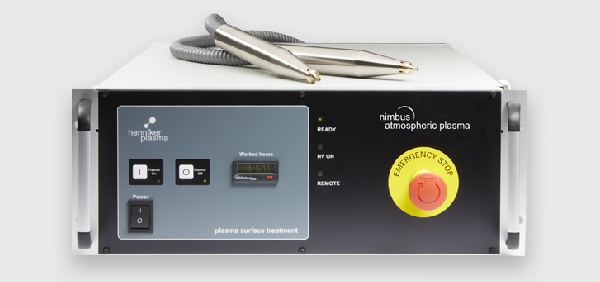
The Nimbus is a dual nozzle atmospheric plasma treatment system ideally suited to surface activation, cleaning and modification of a wide range of materials including polymers, metals, glass and ceramics.
The Nimbus is extremely simple to operate via the front panel soft-keypad and can also be interfaced with external control equipment using the rear panel Sub-D connector providing a variety of I/O control inputs and status read-back to ensure seamless operation with automation lines or robot cells.
The Nimbus operates from a standard single-phase electrical outlet and require only compressed air for operation.
The compact controller features an interlocked airflow regulation unit as standard so that no ancillary equipment is required.
Atmospheric Plasma Advantages
Atmospheric plasma systems address a range of specific treatments & material treatments including; plasma cleaning, plasma surface activation to improve adhesion, PEEK & other engineering polymers, PCBs, metals, ceramics and glass.
- ● Compact benchtop or rack-mount unit
- ● User-friendly soft-key interface
- ● I/O subsystem for line integration
- ● Integrated gas monitoring & control
- ● Precise & repeatable
- ● Treatment of polymers, glass, ceramics, metals Fast, localised atmospheric plasma pre-treatment of parts prior to bonding
- ● Ultra-fine atmospheric plasma cleaning
- ● Surface activation with atmospheric plasma
- ● Highest quality treatments
- ● Localised treatments
- ● Very low operation cost & easy integration with automated lines



